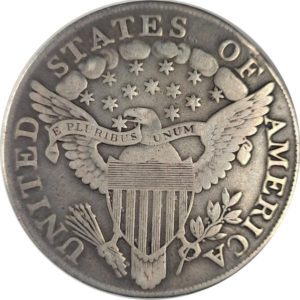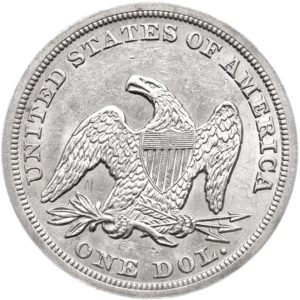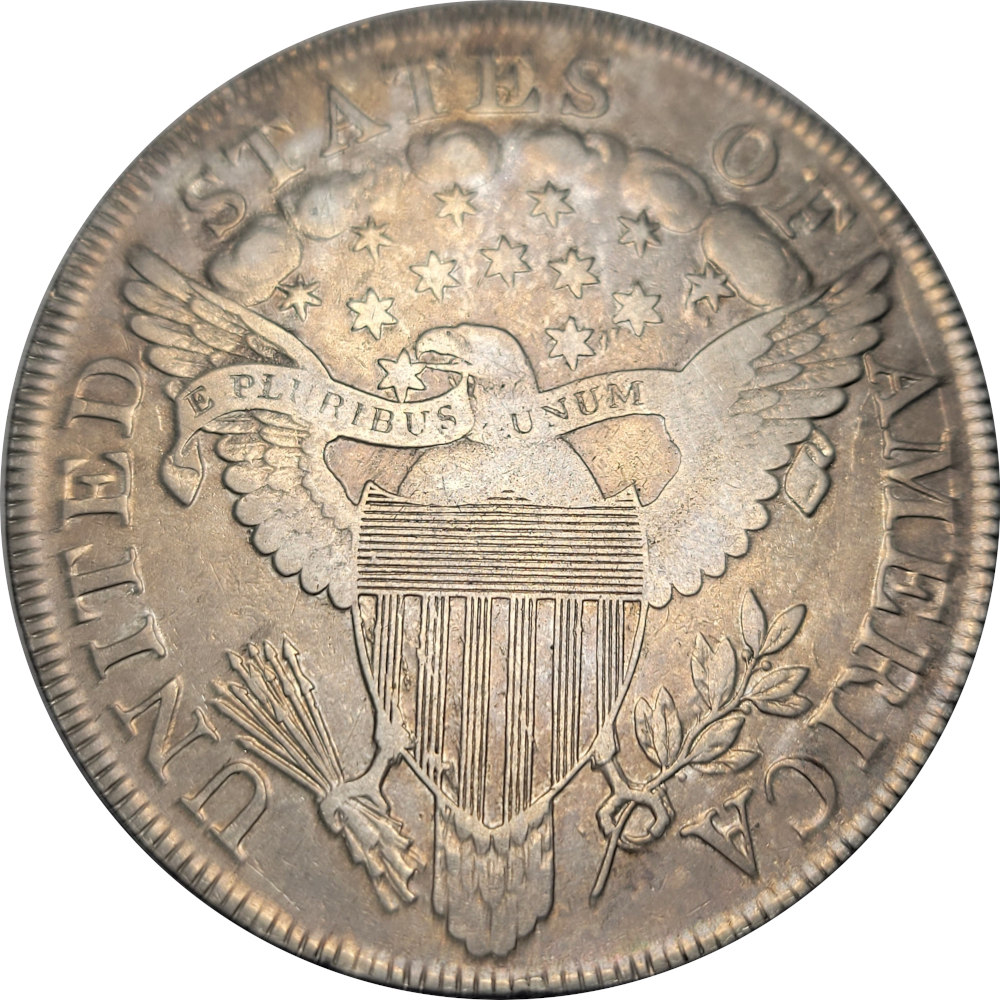1795 $1 Draped Bust, Small Eagle, Off-Center Bust Silver Dollar BB-61 B-4 PCGS XF45.
Q. David Bowers and Mike Sherman relate that the 1795 Draped Bust dollar represents the initial appearance of this design in American coinage. In the silver dollar series the obverse motif was continued through pieces dated 1804 (business strikes were last made in 1803, however), while the reverse motif was employed only through early 1798. Among early silver dollars, the Draped Bust obverse combined with the Small Eagle reverse may be the scarcest type. Among the four dates, 1795-1798, while 1797 is the lowest mintage, prices for all four are roughly the same.
When Henry William DeSaussure became Mint Director in June of 1795, he set two goals: to get gold coins to actively circulate and to improve the appearance of each denomination, with particular attention to the silver coinage. The transition from the Flowing Hair motif to this design was instigated by incoming Mint Director Henry William DeSaussure, adding: “Whatever the inspiration for the portrait, and whatever the design process may have been, the obverse and reverse punches for the 1795 Draped Bust dollar far exceeded in quality anything created earlier.”
DeSaussure contracted with famed portrait artist Gilbert Stuart to prepare a depiction of Liberty to replace Robert Scot‘s Flowing Hair bust. Stuart’s design was then transferred into plaster models and punches by John Eckstein for Scot. Eckstein also prepared improved versions of the Small Eagle reverse punches that showed the eagle in intricate detail and style. For this work Eckstein was paid $30 in September.
The resulting Draped Bust, Small Eagle silver dollar is often heralded as a masterpiece from the early United States Mint. DeSaussure’s tenure at the helm was very short, however; in October of that same year he resigned his position due in part to illness and general dissatisfaction. While only there for a few months, he made a long-lasting impression on the nation’s coinage. While the Small Eagle reverse would only be employed until 1798, the Stuart/Eckstein Draped Bust was used for the rest of the series until coinage of silver dollars was suspended in 1804.
Two different die combinations were used for the 1795 Draped Bust dollar. The die pair believed to have been struck first is the so-called Off-Center Bust variety, BB-51, which features Liberty appearing too far to the left from the center, a position used only on this die pair. This positioning was corrected to a more aesthetically pleasing centered location on the second variety, BB-52. The precise number struck and timing of each variety is unclear. Mint records from the time are not as thorough as scholars would like and much of what can be determined is conjecture.
It is believed that 42,738 1795 Draped Bust dollars were struck, consisting of two readily distinguishable varieties. The first type, B-14, BB-51, is known as the Off-Center Bust and seen here. The central device was initially placed too far left on the die and was later corrected. The second variety with the Centered Bust is designated as B-15, BB-52. The 1795 Off-Center dollars are slightly more available, with the BB-52 variety claiming a population about two-thirds the size of the BB-51. Bowers suggests that 1,400 to 2,000 coins are extant in all grades. With the typical survivor grading VF, however, even EF and AU coins are scarce and Mint State examples are rare.























